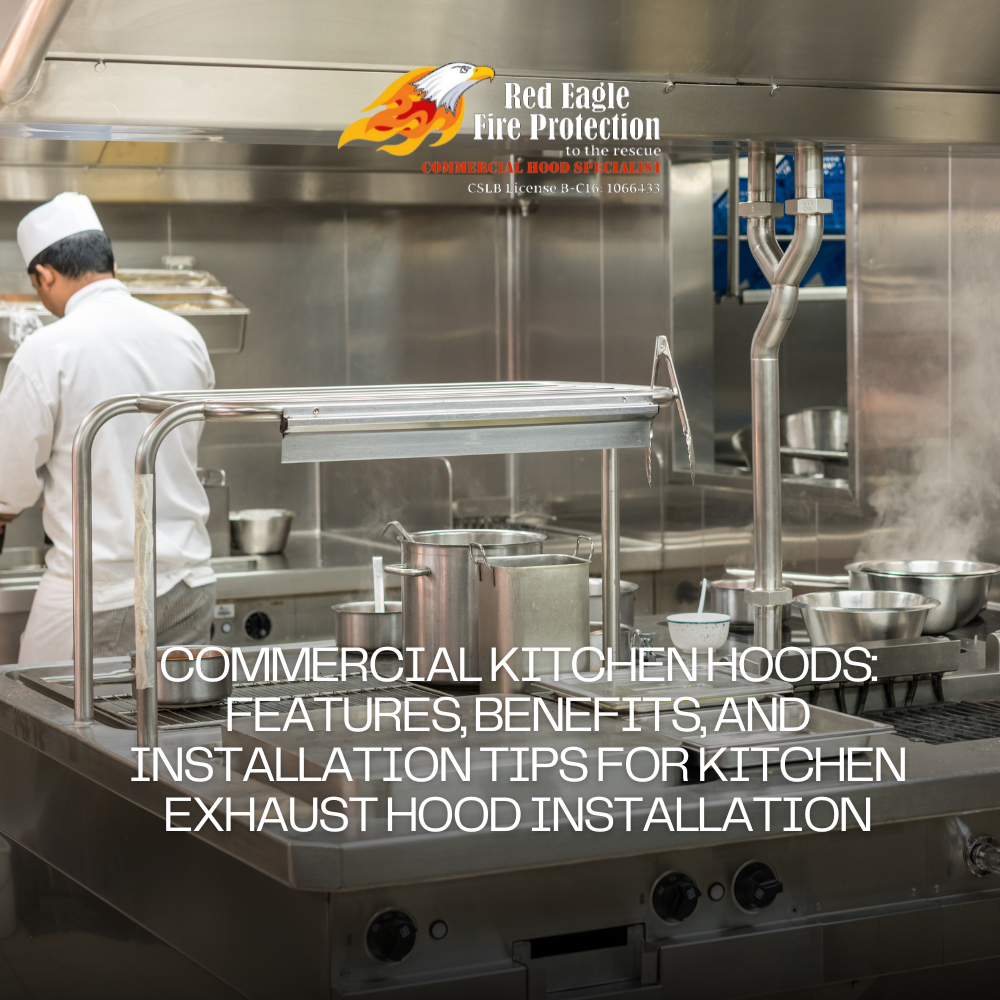Commercial kitchen hoods are essential components in professional kitchens, providing critical ventilation to maintain a safe and efficient working environment. Understanding the features, benefits, and installation tips for kitchen exhaust hood installation can help restaurant owners and managers ensure their kitchen operates smoothly and complies with health and safety regulations.
Features of Commercial Kitchen Hoods
Commercial kitchen hoods come with a variety of features designed to meet the demands of high-volume cooking environments. Key features include:
- 1. Powerful Ventilation Systems: Commercial hoods are equipped with high-capacity fans that effectively remove smoke, heat, grease, and odors from the kitchen, maintaining air quality and comfort for staff and patrons.
- 2. Grease Filters: These hoods include specialized grease filters that trap airborne grease particles, preventing them from accumulating in the ductwork and reducing the risk of fire.
- 3. Durable Construction: Made from stainless steel or other heavy-duty materials, commercial kitchen hoods are built to withstand the rigors of constant use and are resistant to corrosion and damage.
- 4. Fire Suppression Systems: Many commercial hoods are integrated with fire suppression systems that can automatically extinguish fires, adding an extra layer of safety to the kitchen environment.
- 5. Lighting: Integrated lighting in kitchen hoods provides adequate illumination for cooking areas, enhancing visibility and ensuring a safer work environment.
Benefits of Commercial Kitchen Hoods
kitchen exhaust hood installation hood offers numerous benefits:
1. Improved Air Quality: By removing smoke, steam, and cooking odors, kitchen hoods help maintain a comfortable atmosphere for both kitchen staff and customers. This also reduces the risk of respiratory issues caused by prolonged exposure to cooking fumes.
2. Enhanced Fire Safety: Grease buildup in the kitchen is a major fire hazard. Commercial hoods with effective grease filters and fire suppression systems significantly reduce this risk, making the kitchen a safer place to work.
3. Regulatory Compliance: Health and safety regulations require commercial kitchens to have proper ventilation systems. Installing a compliant kitchen hood ensures that the kitchen meets these standards and avoids potential fines or shutdowns.
4. Increased Equipment Longevity: Proper ventilation prevents excessive heat and moisture from damaging kitchen equipment, thereby extending the lifespan of appliances and reducing maintenance costs.
5. Better Employee Productivity: A well-ventilated kitchen is a more comfortable and pleasant place to work, which can lead to higher employee satisfaction and productivity.
Installation Tips for Kitchen Exhaust Hood Installation
Proper installation of a kitchen exhaust hood is crucial to its effectiveness and longevity. Here are some essential tips for successful installation:
1. Assess Your Needs: Before selecting a kitchen hood, evaluate the specific needs of your kitchen, including the size of the cooking area, the type of cooking equipment used, and the volume of food prepared. This will help you choose the right hood with adequate ventilation capacity.
2. Hire a Professional Installer: While it might be tempting to save money by installing the hood yourself, hiring a professional installer ensures that the hood is correctly fitted and complies with local building codes and safety regulations. A professional installation also reduces the risk of future problems.
3. Ensure Proper Ductwork: The ductwork is a critical component of the kitchen exhaust system. It should be properly sized and installed to ensure efficient airflow and prevent grease buildup. Regular inspection and cleaning of the ductwork are also necessary to maintain system efficiency.
4. Follow Manufacturer’s Guidelines: Adhering to the manufacturer’s installation instructions and recommendations is essential for the hood’s optimal performance. This includes proper mounting height, securing the hood to the wall or ceiling, and connecting it to the ductwork and electrical systems.
5. Plan for Maintenance: Schedule regular maintenance and cleaning for your kitchen hood to ensure it operates effectively and safely. This includes cleaning the grease filters, checking the fan and motor, and inspecting the ductwork for blockages.
6. Consider Ventilation Requirements: Ensure that the kitchen hood is appropriately vented to the outside, and not recirculating air within the kitchen. Proper ventilation is crucial for removing contaminants and maintaining indoor air quality.
By understanding the features and benefits of commercial kitchen hoods and following these installation tips, restaurant owners can create a safer, more efficient, and compliant kitchen environment. Investing in a quality kitchen exhaust hood installation is an essential step toward achieving these goals.
READ MORE:

